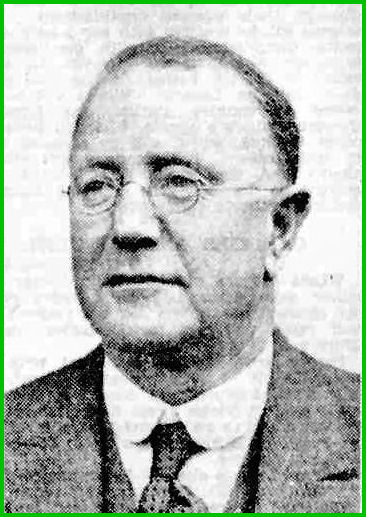

George was born on 13th March 1872 at Albury, New South Wales, Australia; fifth son of Irish-born parents Edmund Hayes Flannery, inspector of schools, and his wife Ellen, née MacSweeney; with brothers Eugene, William B., Edmund F.P., Walter G., and Cyril C., and sister Elizabeth Mary. His father was the son of William and Honora Flannery, and previously taught at St. Augustine's School in Albury, and later at Trim Model School (near Dublin), and died on 1st March 1876.
He was educated at Sydney Boys High School and from 1886 at St Ignatius College, Riverview, where he won many prizes. At the University of Sydney he graduated B.A. in 1892, winning the (Sir G.) Wigram Allen scholarship for law, and LL.B in 1894, with first-class honours and the university medal.
He was admitted to the Bar on 23rd July 1894, and read with A. G. Ralston. One of the bright young men surrounding Sir Edmund Barton (the first Prime Minister of Australia), George campaigned energetically for Federation. Much influenced by Senator R. E. O'Connor, he became Prime Minister Barton's private secretary in 1901. The following year, he accompanied Barton to England for the coronation of King Edward VII; he met many prominent people, visited Ireland and returned through North America.
In 1903, when O'Connor was appointed to the High Court of Australia, George became his associate. Returning to the Bar in 1904, he acquired a large, varied practice especially in appeals before the Full Bench of the Supreme Court and the High Court. He combined a mastery of legal principle with an orderly mind and the gift of lucid argument. His early High Court cases dealt mainly with patents, land tax and arbitration. He was increasingly briefed by the Commonwealth and New South Wales governments in cases involving constitutional law. He recognized the need for amendments to the Constitution.
In 1916 under the War Precautions Act he was appointed by the Commonwealth government chairman of a board to try to determine issues relating to the coal strike. On 5th May 1920 he was appointed King's Counsellor and admitted to the Inner Bar of New South Wales. He kept abreast of the "changing face of litigation" brought about by the financial development of the State, new commercial relations and the growing importance of constitutional law and taxation, which resulted in a more restrained class of advocacy. In 1931 he was retained by the Incorporated Law Institute of New South Wales to address the Legislative Assembly on the demerits of a controversial bill to reconstitute the legal profession; the bill was dropped. He retired in 1937; Mr Justice F. S. Boyce observed that he had "resisted all endeavours to lift him to a more serene atmosphere [the bench]".
With great affection for his old school, George was a foundation member of the Old Ignatians' Union and its second president. In 1901-41 he was a fellow of St John's College, within the university. He found his recreation following the turf and regularly attended Randwick racecourse.
George lived at Centennial Park, and later nearby at Ocean Street, Woollahra, where he died from coronary occlusion on 28th January 1945; he was buried in the Catholic section of Waverley cemetery. He was survived by his wife Susan Teresa, née O'Donnell, whom he had married at St Joseph's Church, Woollahra, on 17th January 1914, and by one of their two sons. His estate was valued for probate at £44,335.
[his portrait is illustrated above; courtesy of Sydney Morning Herald newspaper 24th Oct. 1930]